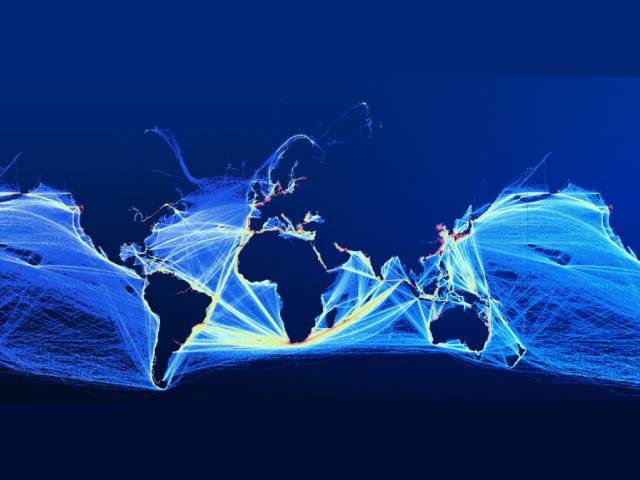This Blog aims to highlight some of the challenges associated with forecasting and routing vessels transiting between the southern Atlantic and southern Indian oceans via the African Capes.
Location, Location, Location
Due to Southern Africa’s location in the sub-tropics, weather patterns are affected by both the tropics to the north and by temperate latitudes to the south. High-pressure systems dominate the region which when averaged form the semi-permanent, subtropical high-pressure cells of the general circulation of the southern hemisphere. These high cells are interspersed by temperate latitude troughs and low pressure systems moving east to the south or tropical waves and low pressure systems moving west to the north, as depicted in Figure 1 below.
Figure 1. Composite diagram showing the important features of the surface atmospheric circulation over South Africa [Tyson et al, 2000][K R MacHutchon, 2006].
Winter Wonderland
Winter off the South African Capes can bring some of the strongest and most adverse weather conditions to be experienced anywhere in the world, and this region is notorious for extreme waves over the edge of the continental shelf and Agulhas Bank. During winter the sub-tropical high pressure cells shift about 6°northward, which effectively allows the roaring forties to move further north and present greater opportunity for gale/storm systems to impact on the Capes region. Figure 2 shows an average of 2.5 storms per month during June-August.

Figure 2. Average monthly occurrences of storms off South Africa [K R MacHutchon, 2006]
More Extreme
In winter the mean significant wave height (SWH) over the Agulhas bank is of the order of 2.0m-2.4m which generally increases to 5.0-6.0m with a peak wave period 10-12 seconds during storms. In more severe storms, which may last up to 5-7 days with winds gusting beyond storm force, it is not uncommon for SWH to reach 8m-9m for short periods. Such conditions pose a significant threat to ship safety and safety of life at sea.
By example, Figure 3 shows a recent SWH forecast for 23 June 2021 (GFS and WaveWatch III) where the colours show the gradient (metres) and the arrows represent the primary wave direction.
Figure 3. Significant Wave Height (metres) for 23 June 2021
These more extreme conditions can also be influenced by the Agulhas current (see Figure 4 below) which poses its greatest danger to the shipping industry during these winter storms, along with long trailing cold fronts on their north side. As these low pressure systems approach the Agulhas current from the southwest, the northerly winds which often precede frontal passages flow in the same direction as the current and can result in the current speeding up from its usual speed.

Figure 4. HYCOM model showing Agulhas current 6 Jul 2021
After frontal passage the rapid wind shift from northerly to southwest results in wave steepening, and depending on the southwest fetch over the southern Atlantic, large waves can build. More generally, when the wave direction opposes the fast‐flowing Agulhas Current, SWH height can increase by up to 40%, but when current magnitude reaches 5-6 knots this figure can be as much as 60%. You can read more on understanding this subject by clicking this previous link on explaining Rogue/Extreme Waves.
Conclusion
Routing vessels via the Cape of Good Hope during winter can be challenging and is more associated with their timing around the Cape. Depending on the individual limitations of each vessel, then the options are to either slow down/speed up the vessel to avoid the adverse weather or seek shelter inshore until the system has passed. In some instances, seeking shelter could potentially last days (even up to a week or so) to allow the strongest and most adverse conditions to pass.
Stay safe and connected.
By






































